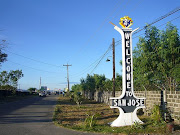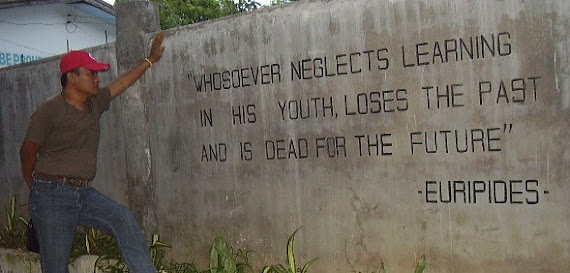The people of Occidental Mindoro contributed not
so many stories as possible references on Marcos’ despotic military rule. But
in faraway town of Palimbang in Sultan Kudarat where some 1,500 Bangsamoros were
slaughtered when soldiers attacked the coastal town in early 70s, merely mentioning the words “Mindoro Occidental”, make them shivers, especially the women,- in
horror and lamentation.
Ferdinand Marcos’ Martial Law which he later
called New Society has this essential characteristic in the context of
Occidental Mindoro: it was submissive to foreign interests, specifically the
United States, and that of his relatives and cronies. It facilitated the rape
of our sovereignty and economy. In page 272 of the report of the National
Committee for the Restoration of Civil Liberties in the Philippine titled Marcos and Martial Law in the Philippines published
in 1979, the former strongman was quoted saying, “This American government is the leading power in the world. Of
necessity, it has very strong influence in resources of help and is itself a
source of aid. Again I say it is our hope…” In 1975, the whole island of Mindoro was
considered laboratory of a project called Mindoro Integrated Rural Development
Program or MIRDP. Despite of the socio-political horrors brought about by the
dreaded Martial Law then, the World Bank and the International Monetary Fund
(WB-IMF) granted Marcos’ authoritarian government a 50 million dollar worth of
financial aid mainly for agricultural and infrastructure projects under MIRDP
in two Mindoro provinces. On its part,
the Marcos government initiated the Mindoro Agro-Industrial Rural Community
Development (MAIRCOD) to implement animal dispersal projects as component of
the Kilusang Kabuhayan at Kaunlaran or
KKK which is under First Lady Imelda Marcos’ Ministry of Human Settlement. This
was called “Mindoro Strategy”, a supposedly model program for the whole
Philippines but not fully implemented due to corruption and bad management,
among others, according to Volker Schult, author of “Mindoro: A Social History
of a Philippine Island in the 20th Century: A Case Study of A Delayed
Developmental Process” in 1991. The contractors and politicians close to Malacañang
are the ones fully gained from it.
Aside from foreign companies, Ferdinand Marcos cronies
profited most from the supposedly development program. They, the cronies or the
ruling elite supplied raw materials to foreign companies who have close
connection and relationships to said firms. Roberto Benedicto, once owner of
the Sugar Central in San Jose and Eduardo Cojuangco, uncle of BS Aquino III are
FMs most prominent cronies. Alfredo “Bajo” Romualdez, a brother of Imelda, owned
a chain of gigantic businesses from a shipping company to being a franchise
holder of Jai Alai. Dr. Pacifico Marcos is the top honcho of many real estate corporations
and hotels that time. Pacifico is the younger brother of Ferdinand.
The late former senator Jovito Salonga once
observed: “The New Society offers a tax
privileges to foreign and local investments. The New Society cannot seem to
stop devising ways and means whereby the big shots could add to their
profits. After reading the tax
exemptions of these investments, one wonders if they pay taxes at all. In any
case, the New Society is proud to say that the Philippine tax incentives are
among Asia’s best.” To add from other source on public interest versus
private interest, economic historian Jan Luiten van Zanden wrote about world
dictators, “With the passage of time, the
balance shifts from the country’s interests to private interests and that is
disastrous for the economy. The quality of governance declines, the clique
surrounding the Great Leader is corrupt and loots the treasury.” This
observation rings true even today in our midst, in the context of Occidental
Mindoro. Some quarters, specifically the relatives of the sitting local
politicians during Marcos time, considered that Martial Law or the New Society such
development in such a good light but poverty in the countryside continued to
linger. This is mainly due to indebtedness of the farmers to loan sharks and
the high price of farm commodities and inputs and the continuous relegation of
the Mangyans. Things we are still experiencing today.
Abunawas Kali along with thousands of other Moro residents
were detained by soldiers in Tacbil mosque and killed each night by tens
according to a news report. Women were brought to a Philippine Navy boat where
they were assaulted and raped. Those who resisted committed suicide by jumping
into the ocean, or were shot dead by soldiers. Bainkung Buwisan, one of the
hundred victims, was then 14 when raped by soldiers. Buwisan, now one of the claimants
under the Human Rights Victims Reparation and Recognition Act, still clearly
recalled the name of the Navy boat: “Mindoro Occidental”.
BRP Occidental Mindoro was landing
ship tank commissioned on July 15, 1972 and probably, according to Philippine Navy records, - after
being decommissioned, the boat was sold as scrap in early 1990s....
--------
(Photo: filipiknow.net)







No comments:
Post a Comment